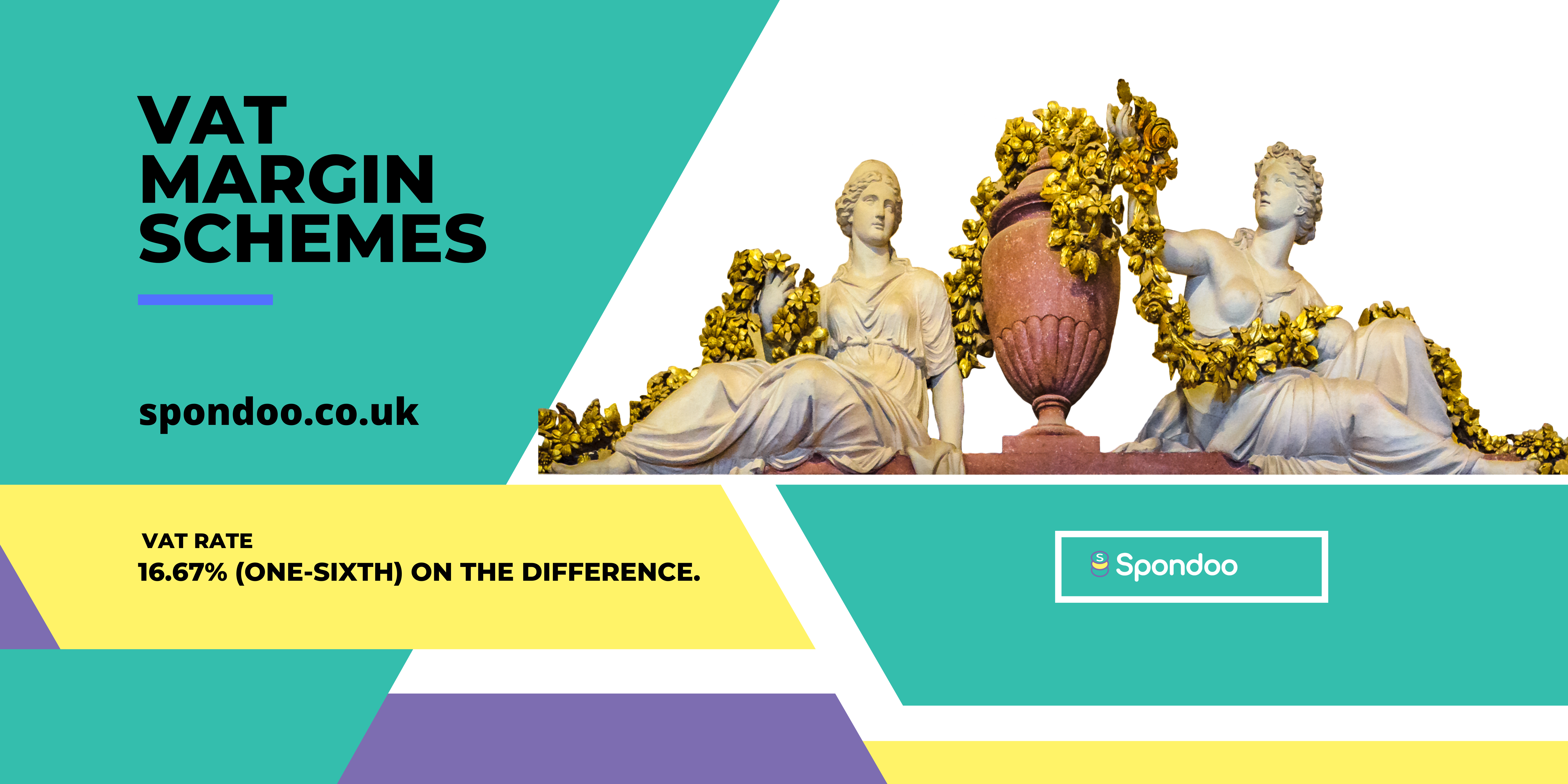
Some VAT registered businesses like second-hand booksellers tend to buy their goods from individuals who are not usually VAT registered themselves, like consumers and private individuals.
When this occurs VAT can become a particularly large burden on the profitability of these types of businesses, as traditional rules require these traders to account for VAT on the entire sale value, despite having no ability to reclaim any input VAT.
As a result, HMRC designed the Marginal Rate Scheme for these types of traders.
The VAT Margin Schemes allows traders to calculate VAT on the difference between the purchase price they paid for the goods, and the eventual sales price when selling the good. To put it another way, the scheme taxes the difference between what you pay for an item and what you sell it for, instead of the full selling price.
You can use a Margin Scheme when you sell:
However, you cannot use a margin scheme for:
You can start using a Margin Scheme at any time by keeping the correct records and then reporting them on your VAT return. You do not have to register or inform HMRC when you do.
However, it is crucial to speak to your accountant for guidance before joining because you may have to pay VAT on the full selling price of each item - if you do not meet all the scheme’s requirements.
A VAT-registered business (Stampy Trader LTD) buys a collection of stamps with historical interest from an individual for £1,500. Since the individual is not VAT-registered, Stampy Trader LTD pays no VAT when it purchases the stamps.
Stampy Trader LTD then resells the stamps for £2,000, making a profit of £500. Using the VAT Margin Scheme for collectors’ items Stampy Trader LTD applies VAT assuming the £500 profit is inclusive of VAT by dividing £500 by 6 to get a VAT payable figure of £83.35.
As a result, Stampy Trader LTD owes £83.35 in VAT, which it reports on its next VAT return.
You must show any goods you bought or sold using a margin scheme on your VAT return. To fill the VAT return:
Box on the VAT return form | What to fill in |
| Box 1
| Output tax due on all eligible goods sold in the period covered by the return. |
| Box 6
| The selling price of all eligible goods sold in the period - less VAT due on the margin. |
| Box 7
| The purchase price of eligible goods - bought in the VAT period. |
You do not have to include margin scheme purchases or sales in boxes 8 and 9 of your VAT return.
If some of the items, you buy, and sell are not eligible for a margin scheme - you must pay and charge VAT for them in the usual way.
You cannot include any of the following in your calculations when using a Margin Scheme:
You must keep the usual VAT records when you use a margin scheme - plus the following two:
The stockbook should track each item sold under the Margin Scheme individually. You must record information for each item you buy and sell that you intend to put under the Margin scheme. The recorded information includes:
Sales | Purchases |
| -
| Stock number in numerical sequence. |
| Date of sale
| Date of purchase |
| Sales invoice number
| Purchase invoice number (unless you made out the purchase invoice yourself) |
| Selling price, or method of disposal
| Purchase price |
| Name of buyer
| Name of seller |
| - | Description of the item |
| The margin on sale (sales price less purchase price)
| - |
| The margin on sale (sales price less purchase price)
| - |
To use the margin scheme - you must have invoices for each item that meets the VAT margin scheme requirements. You must have:
When buying or selling something under a margin scheme, you must give or receive an invoice that includes:
Buying | Selling |
| Date
| Date |
| Seller’s name and address.
| Your name, address, and VAT registration number. |
| Your name and address, or that of your business.
| The buyer’s name and address, or that of their business |
| Item's unique stockbook number (if you bought the item from another VAT-registered company).
| Item’s unique stock book number. |
| Invoice number (unless you made out the purchase invoice yourself).
| Invoice number |
| Item description
| Item description |
| Total price - you must not add any other costs to this price
| Total price - you must not show VAT separately |
| Any of the following, if you bought the item from another VAT-registered business: 'margin scheme - second-hand goods', 'margin scheme - works of art,' or 'margin scheme - collectors' items and antiques.
| Any of the following: 'margin scheme - second-hand goods', 'margin scheme - works of art' or 'margin scheme - collectors' items and antiques.’ |
You must keep records until you sell the item for any stock you bought more than six years ago that you plan to sell under the margin scheme.
There are different rules if you’re selling:
HMRC also has different rules for auctioneers, agents and those that buy and sell goods in Northern Ireland and the EU.
If you are unsure if a particular item is eligible for the Margin Scheme or just need more information on the scheme or the opportunities available in it, please call 02033 259 341 for support.
